Start Exploring Keyword Ideas
Use Serpstat to find the best keywords for your website
How To Create A Content Strategy For A Travel Project Using Serpstat: TripMyDream Experience

Inspired by this idea, we've launched a TripMyDream media platform, which attracts more than half a million sessions per month to our service.
In this article, I will go into detail on how we achieved this, how to create the content strategy for a travel project, and improve the performance of existing articles using Serpstat.
Why Do Travel Projects Need Media Content
Our ultimate goal is to create an ecosystem for travelers, where everyone can find helpful info about traveling, get inspired for new trips, get answers to all questions and find the most affordable flights. We evoke emotions in our users and allow them to turn these emotions into reality by offering tickets for their dream trips.
Media is the part of our project dedicated to these crucial components - emotions, dreams, planning, and valuable content. We aim to inspire users and teach them how to travel excitingly and affordably. As for the benefits for our brand, with clever content marketing, we cultivate top-of-mind awareness in our users by creating an association with traveling and gradually nurture our brand advocates. It's fantastic to become a client's friend who knows everything about trips.
What Articles We Publish at TripMyDream Media
Then we decided to expand, and added:
How Lockdown Affected TripMyDream Media
Currently, the audience is quite active as, during quarantine, people have more free time than usual. Our goal is to motivate the readers to spend some of this extra time with us. For instance, we launched the StayHomeMiles game, in which users complete daily assignments, and earn home miles to then can exchange them for travel prizes. User engagement was fantastic!
Planning and Analysis
At OKR, we determine the guidelines for the editorial team according to the requests:
We evaluate the results every day with Google Analytics. Once every 2 weeks we hold a meeting on analytics: we collect data and look at the dynamics (media, Telegram, organic search, PPC, email, etc.) At the end of the quarter, we present the results in a Data Studio report.
How to Create a Content Plan
We regularly analyze which articles performed well before, what is now in trend, and which are most successful among competitors. To maximize the effectiveness of this analysis, we use the Serpstat toolkit.
According to very optimistic forecasts, international flights may get back to normal by the fall of 2020, by less optimistic forecasts, not earlier than at the beginning of 2021. What should we do with such sad predictions? Adapt and be flexible.
We completely reoriented our content strategy to domestic tourism as traveling around Ukraine is uncharted territory, full of opportunities. That opens a new world of content ideas for us to help our audience discover the many fantastic places our country has to offer. Many travelers have visited dozens of countries yet haven't even seen their own :)
Working with Serpstat
Identifying Top Pages
However, these articles don't always coincide with those that Google prefers and ranks in the top search results.
Serpstat comes in handy to help you identify the search engine's favorites.
The algorithm is as follows:
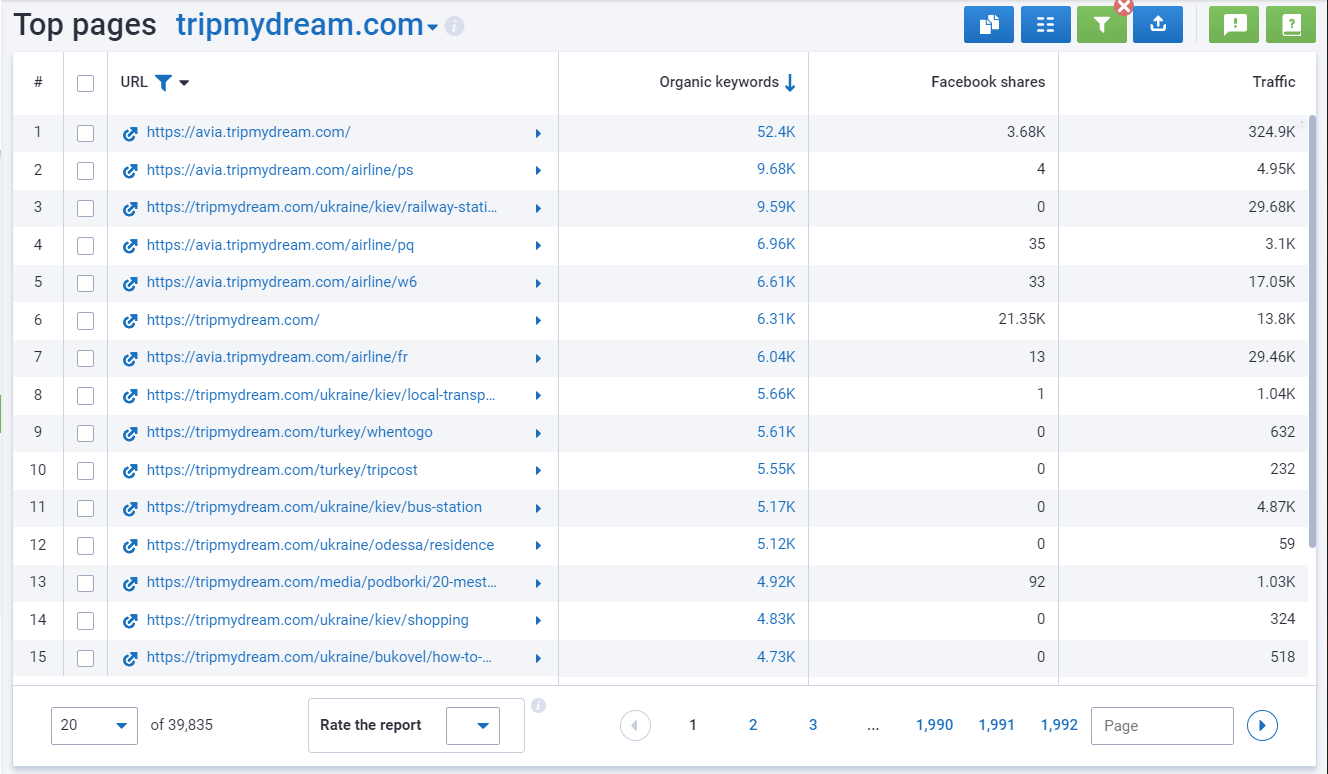
To do this, we go to the filters section of the report, choose the URL filter, and add our parameter: URL → Contains all→ media.
As a result, we get a list of best-performing articles from our blog and find out how much traffic they can potentially drive.
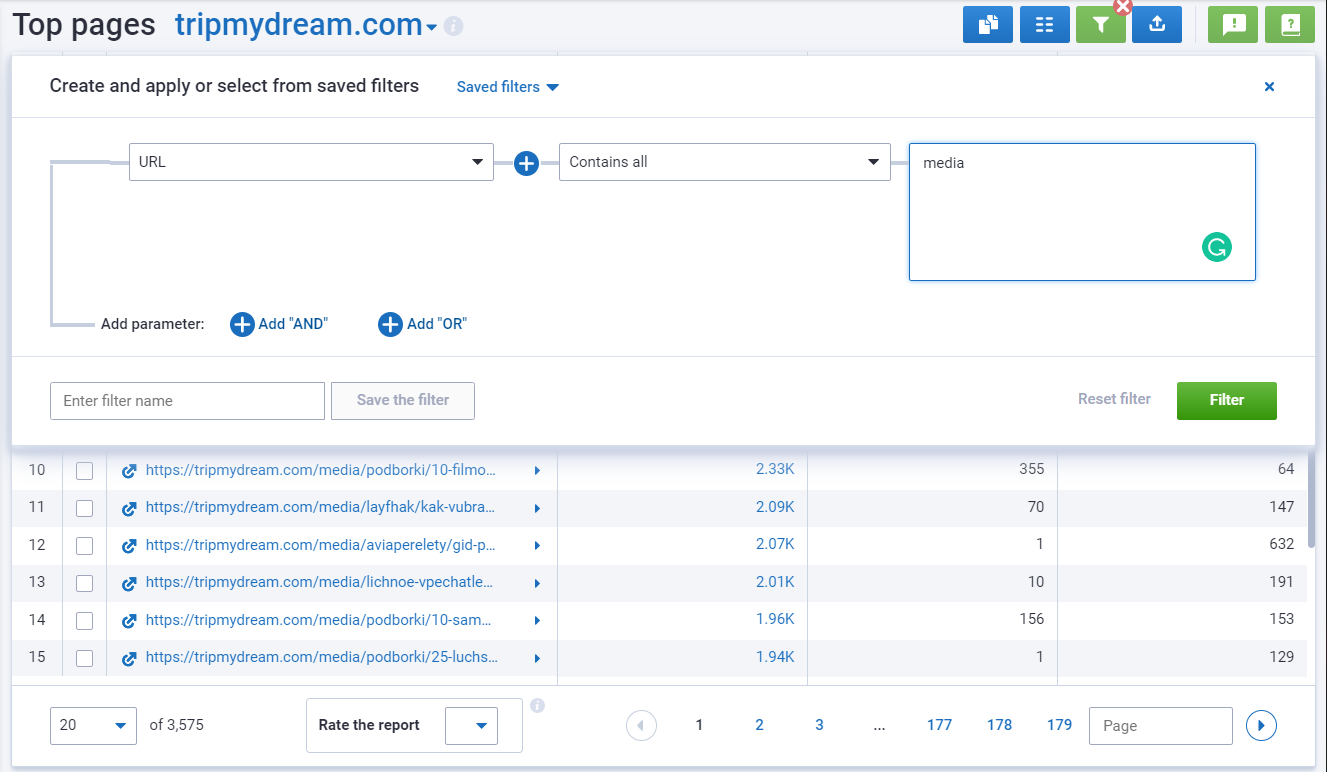
Optimization of Existing Content
We go to the URL Analysis tool → Compare URL, enter the link into the search bar, and get a list of similar articles on other websites.
We can choose some relevant competitors' articles from the list below or enter them manually. In the generated report, we get a list of unique keywords each competitor ranks for and then add relevant ones to our article.
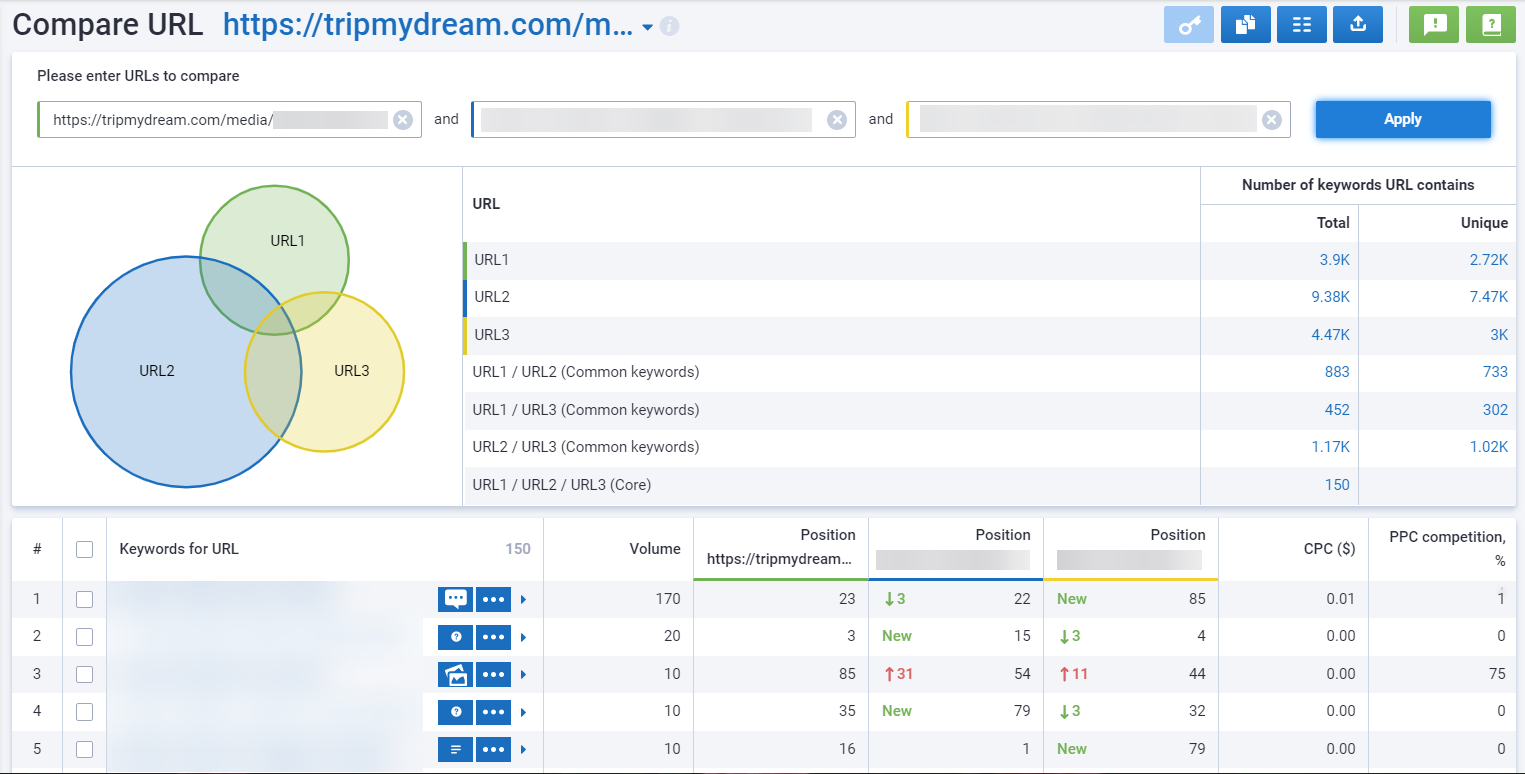
Competitor Analysis
Here's what we can do:
We focus on the competitors that run travel-related blogs for our editorial goals. I recommend always collecting and storing your competitors' list in a separate document to have it on hand and not miss anything.
Let's move on. We need to determine which competitors' articles are the most popular and, therefore, what topics could potentially drive traffic to our website.
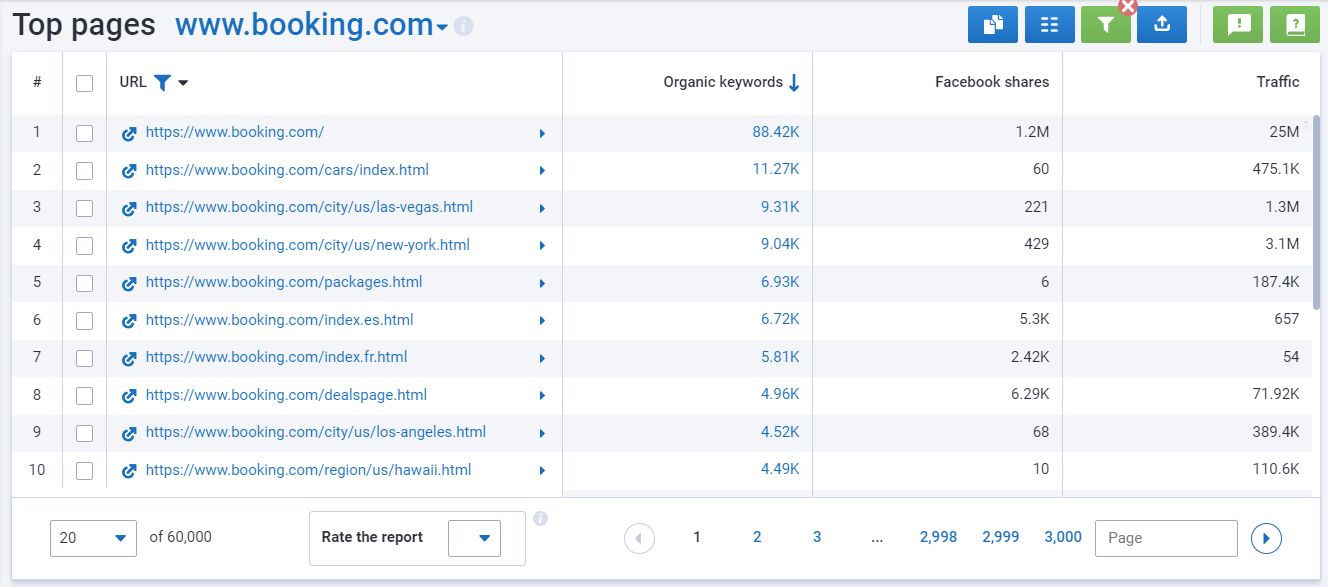
Search for New Topics
To do this, select a search query, for instance, vacation rentals:
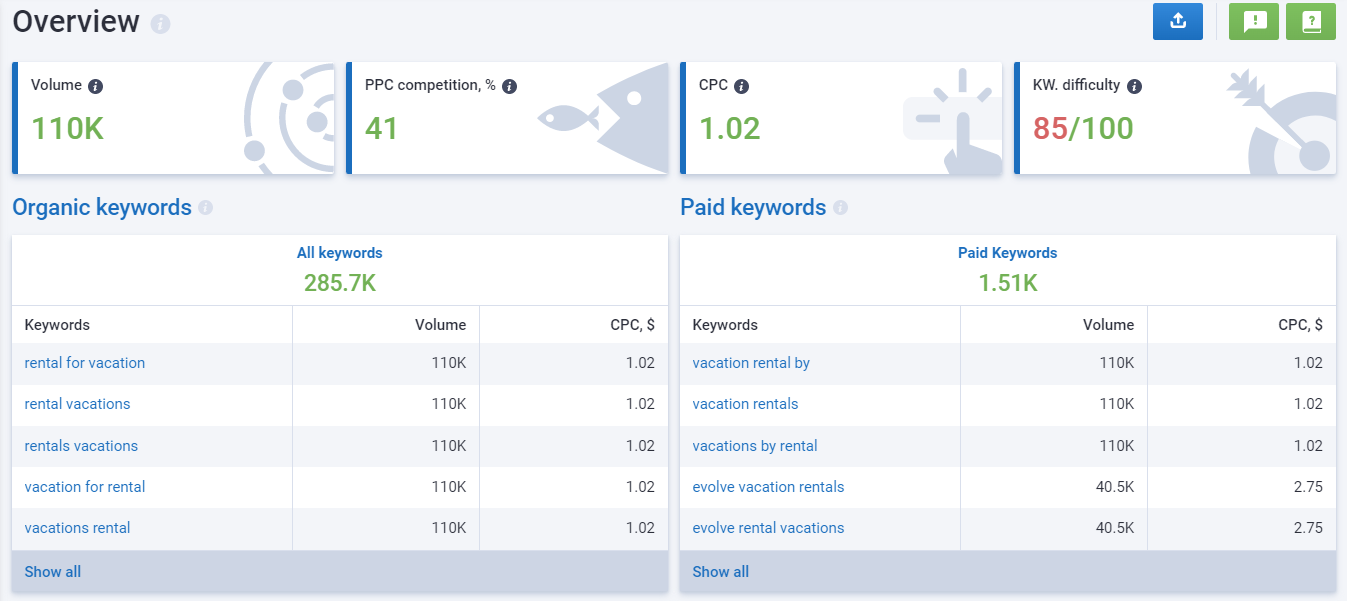
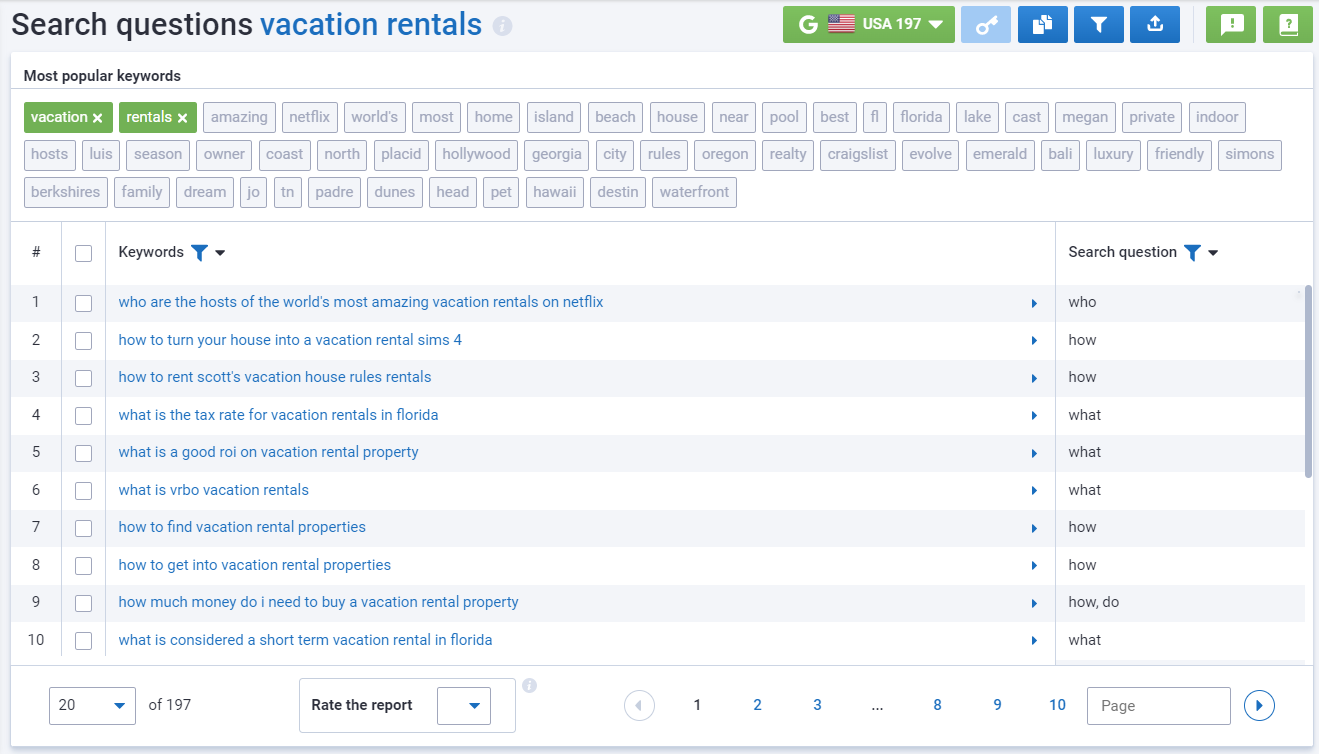
There is a common belief that the more diverse content the brand creates, the more awareness it gets. Of course, there is some truth to it, but it's much more effective to help the readers solve their problems.
Conclusion
We move quickly and efficiently towards the content zen, where editorial efforts and reader requests balance each other out, making us a little better and happier.
- Belkins Case: How Serpstat Helps Us Find And Qualify Leads
- Three Business Tasks We Solved With Serpstat: More SEO Clients, Automated Reports, And Trackable KPIs For SEOs
- Why Serpstat Is A Must Have For A Marketer: Unobvious Cases And Comments
- Zebo: How We Used Serpstat To Analyze Competitors And Check URLs
Speed up your search marketing growth with Serpstat!
Keyword and backlink opportunities, competitors' online strategy, daily rankings and SEO-related issues.
A pack of tools for reducing your time on SEO tasks.
Discover More SEO Tools
Text Analysis Tool
Unlock the power of your text data with our advanced Text Analytics Tools
AI Content Detection
Ai Content Checker – realize if the text is AI-generated
AI Text Generator
Try our AI Content Writer tool and streamline your content creation process
AI Content Tools
AI Content Marketing Tools – simplify and optimize the content creation process
Recommended posts
Cases, life hacks, researches, and useful articles
Don’t you have time to follow the news? No worries! Our editor will choose articles that will definitely help you with your work. Join our cozy community :)
By clicking the button, you agree to our privacy policy.

